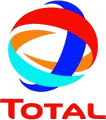
 |
High-risk situations |
 |
The Golden Rules of Occupational Safety.. Thoroughness and Vigilance |
Do not start up or shut down equipment or installations without using the appropriate written operating procedure.
Any situation where the risk level is temporarily increased is reported. Induced risks are identified and analyzed and compensatory measures are implemented.
Traffic.. Machine, vehicle, cyclist, pedestrians
Do not exceed the speed limits.
Traffic rules apply inside and outside sites.
Body mechanics and tools
Do not carry out work if you do not have the right tools for the job and the environment.
Adopting an inappropriate posture when handling objects or using tools can cause physical harm.
Protective equipment
Do not access installations and perform work without wearing general or task-specific personal protective equipment (PPE).
Collective protection is preferred. Individual protection completes preventive measures already taken.
Work permits
Do not perform work without a valid work permit.
Any work performed on site requires a permit.
Lifting
Do not walk under a load while lifting is taking place.
For any work involving a crane, hoist or other mechanical system, a preliminary risk analysis is required. Equipment must be in good condition. Personnel must be qualified and access to the area must be restricted.
Work on powered systems
Do not perform work without checking that the power and product source supply has been rendered inoperative.
Some works require the energy to be safely discharge or the equipment to be purged and vented. In such cases a lockout system is set up to isolate the energy or product according to a specific method.
Confined spaces
Do not enter a confined space until isolation has been verified and the atmosphere checked.
Do not enter a confined space (container, tank, well, etc.) without supervision and only after the atmosphere and isolation have been checked.
Excavation work
Do not perform excavation work without a valid work permit comprising a map of all underground hazards.
Manual or mechanical excavation work, including dragging rivers and seabeds, can only start after a risk analysis has been performed to identify all hazards in the zone and related precautions have been taken.
Working at heights
Do not work at heights without a safety harness when there is no collective protective equipment.
Work at heights is performed on fixed or mobile platforms with a guardrail designed for the task at hand.
Work on rooftops (buildings, reservoirs) is performed only after the roof's solidity has been checked and appropriate protection has been set up.
Ladders are a means of access only; their use must remain exceptional.
Change management
Do not make any technical or organizational changes without prior authorization.
Any changes in technique or organization must be the subject of a risk analysis.
Simultaneous operations or co-activities
Do not perform simultaneous operations or co-activities without a prior visit.
All work or operations inside a unit in operation can increase risk levels. Interferences due to simultaneous operations or joint-activities must be identified and controlled.
A Subject at the Heart of Discussions..
with Employee Representatives
Employee representatives play a key role in building the Group's safety culture.
A culture involves common values and these values cannot exist without sharing, confidence and regular
discussions.
To reinforce this dialogue, twice a year the industrial safety department and the European Committee organize a field visit to an industrial facility with one of the Group's Safety Directives or feedback on major accident as a theme.
Thus, in 2009 a trip was organized to the Antwerp refinery in Belgium in order to study the lessons
learned after a sudden rupture in the bottom of a crude oil tank.
A visit of the Lacq platform was also organized where discussions revolved around application of
the Safety Directive concerning accident-inducing substances (alcohol and drugs).
Once a year as well, the Group's industrial safety and labor relations departments and the European Committee organize a joint seminar. For example, it was devoted, one year, to human and organizational factors and safety with a training session led by Mr. Francois Daniellou, professor of ergonomics at the University of Bordeaux.
Members of occupational health and safety committees (CHSCT) and management teams were able to work together and take full advantage of the theoretical and practical aspects of this training, which was illustrated by numerous testimonials. This knowledge will be invaluable in improving collective awareness of situations to cope with.
October 2025: All safety rules and guidelines mentioned in this article may have been changed or adjusted by the company in the meantime.
Related Post(s)

bp's safety policy states no harm to people and no accidents...